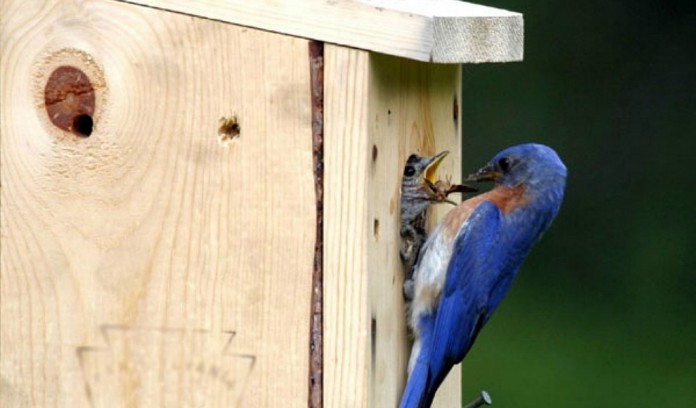The ultimate environmental cue that triggers many behavioral changes in the natural world is photoperiod. Longer days in late winter signal that it’s time to breed. Shorter fall days mean it’s time to prepare for winter.
Because changes in day length always proceed at the same time and rate, it is an absolutely reliable timing mechanism that ensures that young animals appear when food is abundant and that birds migrate before severe weather sets in.
Add temperature factor
Temperature tunes this timing mechanism more precisely. A cold spring can push things back a week or two. And when it’s unusually warm in late winter, like last week when it was 73 degrees on March 8, breeding behavior can begin sooner rather than later.
With that in mind, I think this year we may see birds begin nesting early. Of course, that’s barring a late winter cold snap or snowstorm.
Signs are everywhere
Chickadees, titmice, bluebirds and Carolina wrens have been singing up a storm for the last 10 days. I expect to see nesting material being carried to nest boxes any day. So clean out existing nest boxes and build a few new ones for your favorite cavity-nesting birds. If deer mice occupy a box, use a stick to remove the nest.
Box basics
Advice on building nest boxes is often needlessly complicated. A basic box for backyard cavity-nesters measures four-by-four inches inside and is 10 to 12 inches high.
The entrance hole should measure precisely 1.5-inch in diameter and be placed about an inch from the top. This hole size excludes bigger-bodied starlings from using the boxes.
Extend the roof at least three inches beyond the front of the box to protect the entrance from driving rain. The front or side should flip open for easy cleaning.
Placement is key
The key to attracting cavity-nesters is to place the boxes in suitable habitat. Bluebirds, for example, prefer open areas with a few scattered trees — hayfields, pastures, and cemeteries. Along the edge of the woods, a nest box will attract chickadees and titmice.
In shrubby old fields and forest edges, wrens are easy to attract. And near ponds in open country, tree swallows abound. A basic box is perfect for any of these smaller cavity-nesters.
Nest ID
Bluebird nests are simple cups made from dried grass or pine needles. The foundation of a chickadee nest consists of several inches of fresh green moss; the cup is lined with animal fur. A titmouse nest is more a collection of loose dried leaves.
Wrens invariably fill a cavity with twigs before constructing a small cup in a back corner of the box. And tree swallow nests are always lined with feathers — often white feathers from domestic chickens or ducks.
On your computer
If you’re unable to provide nest boxes yourself, check in on some of many nest cameras that bring active bird nests right to your computer monitor.
In Pittsburgh, for example, a pair of bald eagles should be hatching their eggs in about a week or so. Visit www.aswp.org and click on the Hays nest at the “Bald Eagle Cam” link. If you love owls, try the great horned owl nest in Georgia, a barred owl nest in Indiana, and a barn owl nest in Texas. These can be viewed at cams.allaboutbirds.org. Also viewable at that site are nests of a Laysan albatross in Hawaii and a red-tailed hawk in New York.
Track the hummers
To track the return of ruby-throated hummingbirds, go to www.hummingbirds.net and click on “migration map.” The first arrivals made it to the Gulf Coast on Feb. 19. Check their progress every few days, and you’ll know when to get nectar feeders up this year. And if you’re a big fan of monarch butterflies, visit www.monarchwatch.org and click “Monarch Population Status.”
This year nine colonies of monarchs were found at the wintering site in Mexico, and their numbers are up significantly. The area occupied by monarchs this winter was nearly four times the area occupied last year. So the monarch population has rebounded nicely this year. Watch for the first of these orange and black beauties to return in June or July.













